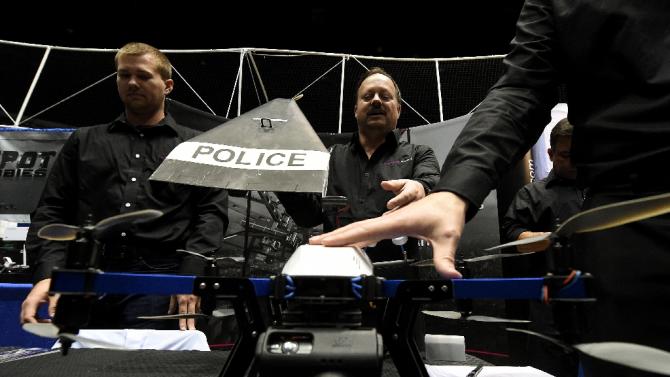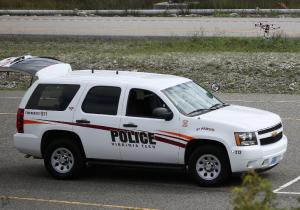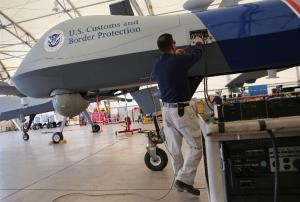Los Angeles (AFP) – Drones are increasingly making their mark in the arsenal of US police forces, operating in a legal gray area and sparking concerns of constant surveillance of civilians.
The specter of armed drones surfaced with a law passed in North Dakota last month that allows police to equip the aircraft with teargas.
“It’s still a bit of a Wild West,” said American Civil Liberties Union (ACLU) policy analyst Jay Stanley.
Since 2012, government agencies can use small drones — weighing less than 55 pounds, or 25 kilograms — under certain conditions and after obtaining a certificate from the Federal Aviation Administration.
But the FAA, which is preparing small drone regulations, does not have authority on privacy protection and there is no specific framework on the issue on a national level.
Up to two dozen police forces are currently fully equipped with drones and trained to use them, including pioneers Grand Forks in North Dakota; Arlington, Texas; Mesa County, Colorado and the Utah Highway Patrol.
– Mass surveillance –
According to the digital rights group Electronic Frontier Foundation, at least 60 police forces across the country — from Houston, Texas, to Mobile, Alabama, North Little Rock, Arkansas, and Miami-Dade County — have asked for drone certification.
The FBI also uses drones for specific missions.
Through the drones, law enforcement gets a bird’s eye view of accident and crime scenes, can search for suspects or missing people and obtain tactical information when, for example, a dangerous suspect has barricaded himself.
The unmanned aircraft cost police $15,000 to $50,000, far less than the $500,000 to $3 million a helicopter can fetch.
Some cities, like San Jose, California, only have pilot programs. Others such as Seattle, Washington, bought drones and then gave up on the program in the face of public outcry.
Many government agencies “are just waiting to see how things settle down and waiting to see further development of these systems,” said Philip Finnegan of the Teal Group aerospace and defense consulting company.
“For a lot of them, it’s not worth the political risk.”
He predicted that the commercial market will take off within five years as the public grows increasingly comfortable with drones and law enforcement uses them more.
Rights groups are not opposed to drones as such but rather are concerned that some law enforcement agencies will use them for constant surveillance of the population.
“Without proper regulation, drones equipped with facial recognition software, infrared technology and speakers capable of monitoring personal conversations would cause unprecedented invasions of our privacy rights,” the ACLU said.
“Interconnected drones could enable mass tracking of vehicles and people in wide areas,” it added.
“Tiny drones could go completely unnoticed while peering into the window of a home or place of worship.”
The Electronic Privacy Information Center, for one, is calling for a warrant before each police drone flight.
“When you see what the FBI has been wanting to do with the Stingray technology, that’s very troubling,” said Patrick Eddington of the Cato Institute, referring to phone trackers.
Critics are also concerned about wasted public funds.
The Bureau of Alcohol, Tobacco, Firearms and Explosives, for example, bought $600,000 worth of drones without ever using them.
Customs and Border Protection meanwhile froze its purchase program after one of its large Predator military drones — with a price tag of $12 million a piece — crashed.
But if Grand Forks police are seeking to equip their drones with tear gas, it’s an isolated case for now.
“There’s a consensus that it’s a bad idea,” Stanley said about installing weapons, even non-lethal ones, on drones.
http://news.yahoo.com/drone-policing-us-seen-wild-west-215907770.html




